Related Research Articles

The potato is a root vegetable native to the Americas, a starchy tuber of the plant Solanum tuberosum, and the plant itself is a perennial in the nightshade family, Solanaceae.

Monoculture is the agricultural practice of growing a single crop, plant, or livestock species, variety, or breed in a field or farming system at a time. Polyculture, where more than one crop species is grown in the same space at the same time, is the alternative to monoculture. Monoculture is widely used both in industrial farming and in organic farming. It has allowed farmers to increase efficiency in planting, managing, and harvesting but it can also increase the risk of diseases or pest outbreaks.
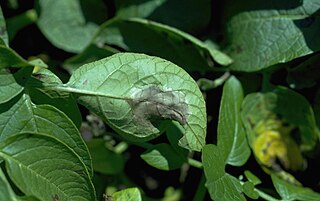
Phytophthora infestans is an oomycete or water mold, a fungus-like microorganism that causes the serious potato and tomato disease known as late blight or potato blight. Early blight, caused by Alternaria solani, is also often called "potato blight". Late blight was a major culprit in the 1840s European, the 1845 - 1852 Irish, and the 1846 Highland potato famines. The organism can also infect some other members of the Solanaceae. The pathogen is favored by moist, cool environments: sporulation is optimal at 12–18 °C (54–64 °F) in water-saturated or nearly saturated environments, and zoospore production is favored at temperatures below 15 °C (59 °F). Lesion growth rates are typically optimal at a slightly warmer temperature range of 20 to 24 °C.
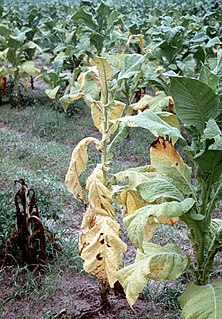
Fusarium wilt is a common vascular wilt fungal disease, exhibiting symptoms similar to Verticillium wilt. This disease has been investigated extensively since the early years of this century. The pathogen that causes Fusarium wilt is Fusarium oxysporum. The species is further divided into formae speciales based on host plant.

Potato bread is a form of bread in which potato flour or potato replaces a portion of the regular wheat flour. It is cooked in a variety of ways, including baking it on a hot griddle or pan, or in an oven. It may be leavened or unleavened, and may have a variety of other ingredients baked into it. The ratio of potato to wheat flour varies significantly from recipe to recipe, with some recipes having a majority of potato, and others having a majority of wheat flour. Some recipes call for mashed potatoes, with others calling for dehydrated potato flakes. It is available as a commercial product in many countries, with similar variations in ingredients, cooking method, and other variables.

Russet Burbank is a potato cultivar with dark brown skin and few eyes that is the most widely grown potato in North America. A russet type, its flesh is white, dry, and mealy, and it is good for baking, mashing, and french fries (chips). It is a common and popular potato.

Rhizoctonia solani is a plant pathogenic fungus with a wide host range and worldwide distribution. It was discovered more than 100 years ago. R. solani frequently exists as thread-like growth on plants or in culture, and is considered a soil-borne pathogen. R. solani is best known to cause various plant diseases such as collar rot, root rot, damping off, and wire stem. R. solani attacks its hosts when they are in their early stages of development, such as seeds and seedlings, which are typically found in the soil. The pathogen is known to cause serious plant losses by attacking primarily the roots and lower stems of plants. Although it has a wide range of hosts, its main targets are herbaceous plants. R. solani is a basidiomycete fungus but the teleomorph stage is not prominent. Occasionally, sexual spores (basidiospores) are produced on infected plants. The disease cycle of R. solani is important in management and control of the pathogen. The pathogen is not currently known to produce any asexual spores (conidia), though it is considered to have an asexual lifecycle perpetuated through sclerotia.
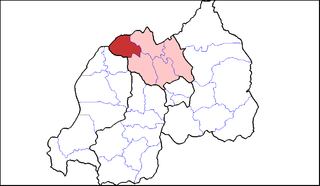
Musanze is a district in the Northern Province of Rwanda. Its capital city is Ruhengeri, Musanze is the fourth largest town in Rwanda and is quickly growing into a bustling metropolis. Musanze district is one of thirty districts in all of Rwanda and one of five districts in the Northern Province.
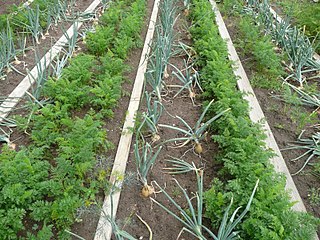
Crop diversity is the variance in genetic and phenotypic characteristics of plants used in agriculture. Over the past 50 years, there has been a major decline in two components of crop diversity; genetic diversity within each crop and the number of species commonly grown.
Bloomer is a potato variety. Bloomers produce round purplish-blue tubers with fairly deep eyes. Flesh is cream coloured.
British Queen is a variety of potato that was bred by Archibald Finlay.
Black Champion is a variety of potato with purple skin colour that produces round, flattened tubers. Davidson (1936) described this as an old variety found growing in the Midlands of Ireland but of no commercial value. Noted by Kehoe (1986) as being unique to the Irish potato collection.
The Ulster Emblem variety of potatoes originated in Northern Ireland. It was originally bred by Mr J. Clarke of Ballymoney, Co. Antrim. It has a long oval shape with white skin and flesh which has a semiwaxy texture, reasonable flavour with good cooking quality, and a fairly good yield. This variety has a red violet coloured flower and a pink sprout colour. It also has a high resistance to late blight on the tubers as well as the plant foliage.

DLF Seeds A/S is a global seed company dealing in forage and amenity seeds, sugar and forage beet seed, seed and ware potatoes and other crops. The company is headquartered in Roskilde, Denmark. DLF is the global market leader and provides grass and clover seeds to more than 100 countries. DLF operates within four different business areas. DLF is the undisputed market leader in forage and turf seed with an estimated share of approximately 50% in Europa and 30% on a global scale. DLF provides grass seeds for major sporting events worldwide, including the UEFA Champions League, UEFA Europa League, the FIFA Football World Cup for both men and women, The Olympic Games, The Premier League and the list goes on.
Champion is a potato variety bred by John Nicoll in Scotland and widely grown in Ireland during the latter half of the 19th century. The tuber is round, with white skin and yellow flesh. The texture is described as "floury".
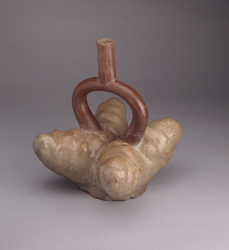
The potato was the first domesticated vegetable in the region of modern-day southern Peru and extreme northwestern Bolivia between 8000 and 5000 BC. Cultivation of potatoes in South America may go back 10,000 years, but tubers do not preserve well in the archaeological record, making identification difficult. The earliest archaeologically verified potato tuber remains have been found at the coastal site of Ancón, dating to 2500 BC. Aside from actual remains, the potato is also found in the Peruvian archaeological record as a design influence of ceramic pottery, often in the shape of vessels. The potato has since spread around the world and has become a staple crop in many countries.

In North Korea, the cultivation of potatoes is important to the livelihood of the country's people. The crop was introduced into the country in the early 1800s. Since the famine of the 1990s, a potato revolution has taken place. Over ten years, the area of potato cultivation in North Korea quadrupled to 200,000 hectares and per capita consumption increased from 16 to 60 kilograms per year.

Blackleg is a plant disease of potato caused by pectolytic bacteria that can result in stunting, wilting, chlorosis of leaves, necrosis of several tissues, a decline in yield, and at times the death of the potato plant. The term "blackleg" originates from the typical blackening and decay of the lower stem portion, or "leg", of the plant.
Redcliffe Nathan Salaman was a British botanist and potato breeder. His landmark work was the 1949 book The History and Social Influence of the Potato, which established the history of nutrients as a new literary genre.

James Clark, was an English market gardener and horticulturist in Christchurch, Dorset who specialised in raising new varieties of potato. His most noted success was Magnum Bonum, described by The Times as "the first real disease-resisting potato ever originated and offered to the world".
References
- 1 2 "Potato Varieties of Historical Interest in Ireland" (PDF). p. 58. Retrieved 2016-10-13.
- ↑ Irish Seed Savers Spring 2010 Seed List
